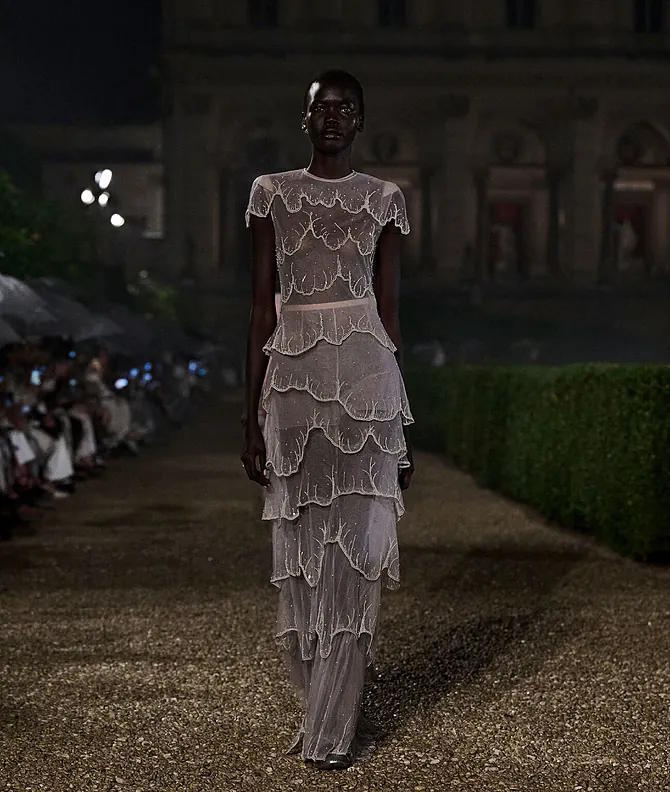After nine years at the helm of Dior, Maria Grazia Chiuri says goodbye to the French maison. Her last show, the Cruise 2026, held in Rome, was not just a fashion show, but a closure loaded with symbols, emotion, and memory. The farewell was not announced with words, but it was sensed in every seam. On Tuesday, May 29, after months of speculation, the news was officially confirmed.
In a statement, Delphine Arnault, president and CEO of Christian Dior Couture, expressed her "warmest thanks to Maria Grazia Chiuri, who, since her arrival at Dior, has done tremendous work with an inspiring feminist perspective and exceptional creativity, all imbued with the spirit of monsieur Dior, allowing her to design highly desirable collections. She has written a key chapter in the history of Christian Dior, contributing significantly to its remarkable growth and being the first woman to lead the creation of women's collections." Maria Grazia Chiuri continues: "After nine years, I leave Dior, delighted to have had this extraordinary opportunity. I would like to thank monsieur Arnault for trusting me and Delphine for her support. I am especially grateful for the work done by my teams and the ateliers. Their talent and experience allowed me to realize my vision of committed women's fashion, in close dialogue with several generations of female artists. Together, we have written a striking chapter of which I am immensely proud."
Chiuri arrived at Dior in 2016 and marked a before and after in the history of the brand. She was the first woman to hold the position of creative director, and she did so leaving a clear mark: feminism, art, culture, and politics ran through her collections. With her, message t-shirts ("We should all be feminists") shared space with modern reinterpretations of the New Look and constant references to female craftsmanship, the body, and resistance. The accessories line grew spectacularly under her leadership: the Saddle, conceived by John Galliano, returned to the collections, and the Book Tote model or the D-Journey succeeded in making Dior one of the most "desirable" brands in the market.
For almost a decade, she transformed the shows into statements of principles. She took Dior to places like Marrakech, Athens, Seville, or Mumbai, not only to showcase clothing but to connect with local narratives, artists, craftswomen, and social movements. She bet on collaboration, handmade work, and on dressing women from knowledge, not from passing trends.
For her farewell, she chose Rome. The city where she was born, where she studied, and which has been a constant in her creative imagination. The setting: Villa Albani Torlonia, a place full of history and classical beauty. The title of the collection said it all: Theatrum Mundi, "the world as a theater."
The models walked among columns and sculptures like mythological figures. With lightweight tunics, structured capes, drapes, and embroideries that seemed to come out of an ancient fresco. White was the dominant tone, with flashes of red and black. A visual language of power, ritual, and rebirth.
The collection looked to classical art, but also to Italian neorealist cinema and women like Anna Magnani: strong, complex, unforgettable. Among the guests, Natalie Portman, Rosamund Pike, and Beatrice Borromeo dressed in white, as if participating in an intimate ritual.
And then, the rain. Just as the show began. But it didn't ruin anything. It elevated everything. As if Rome itself —and the sky— understood that they were witnessing an ending.
Chiuri came out for a few seconds, discreetly greeted, and disappeared again among sculptures and applause. As if she knew that the essential had already been said. That her legacy is embroidered in every show, in every message, in every woman who dresses with intention today.
Rome was the perfect place to close this chapter. Because there are cities that are not just traveled: they are inhabited. And there are women who not only create fashion: they make history.
